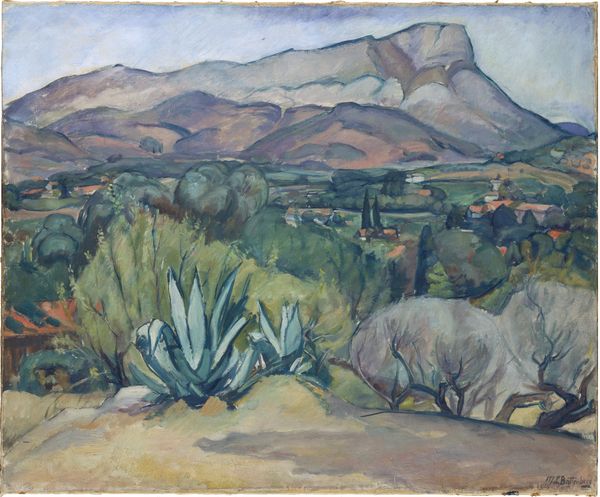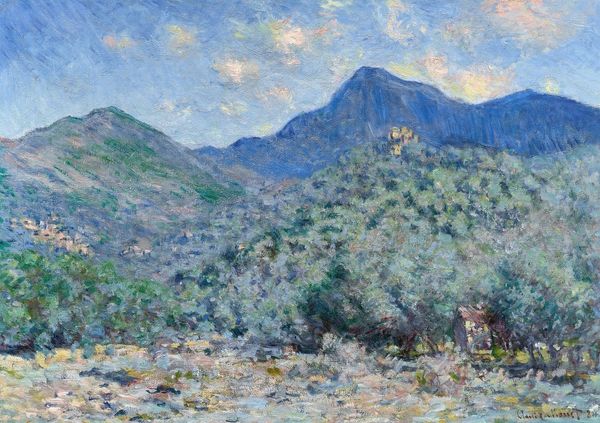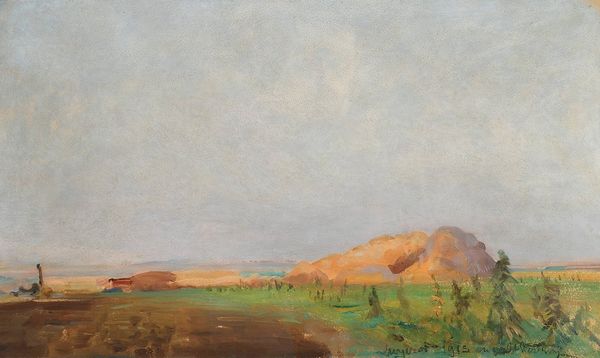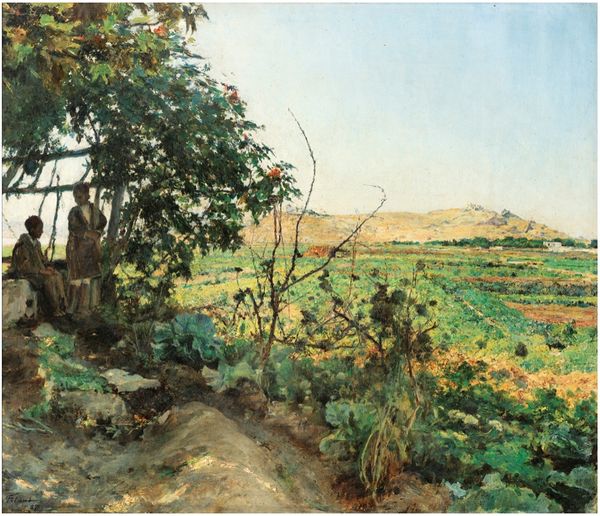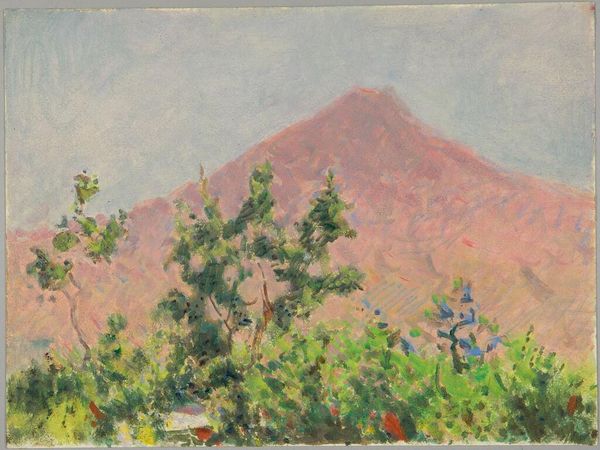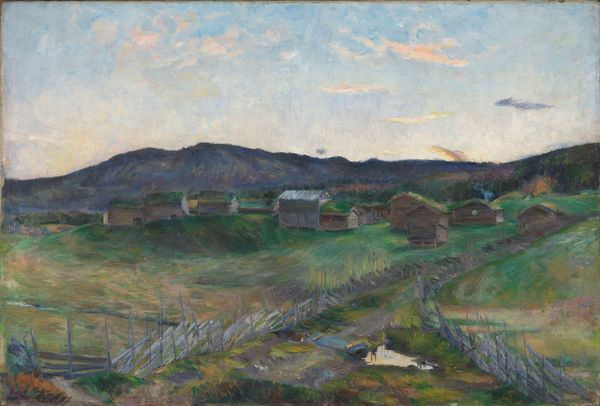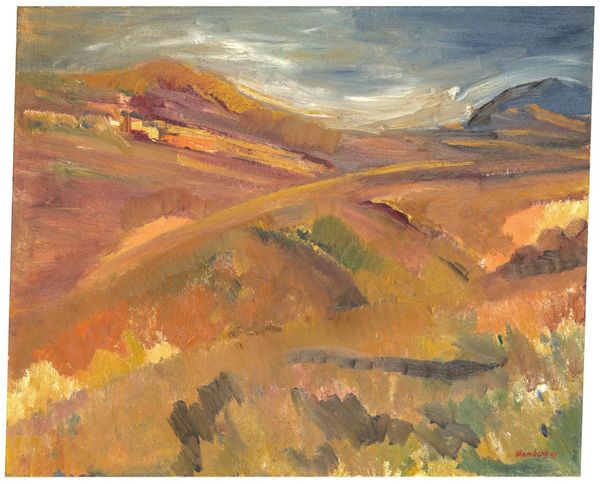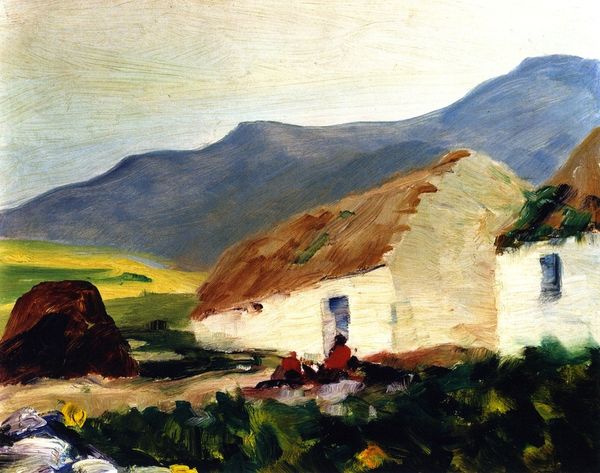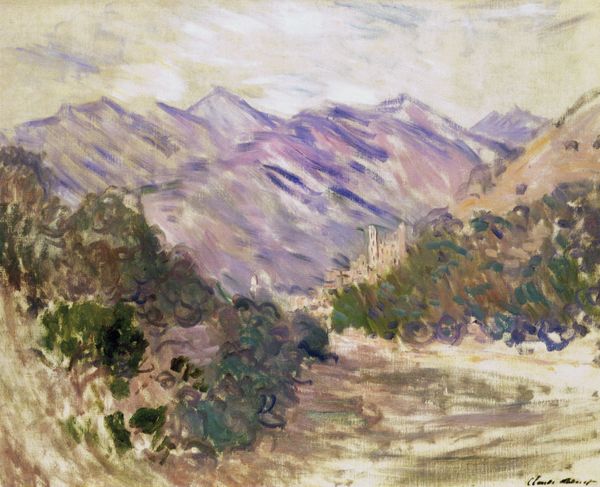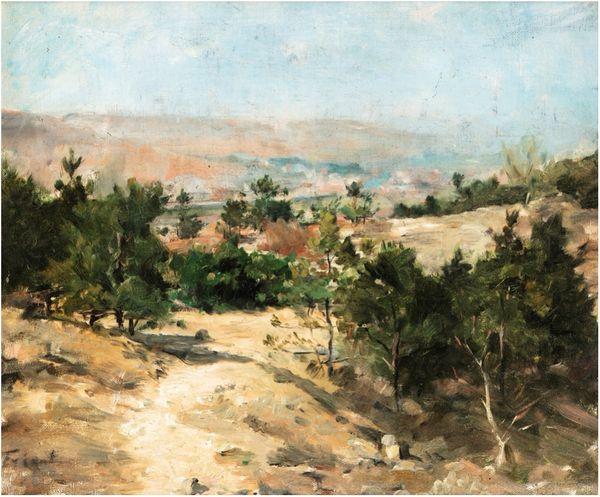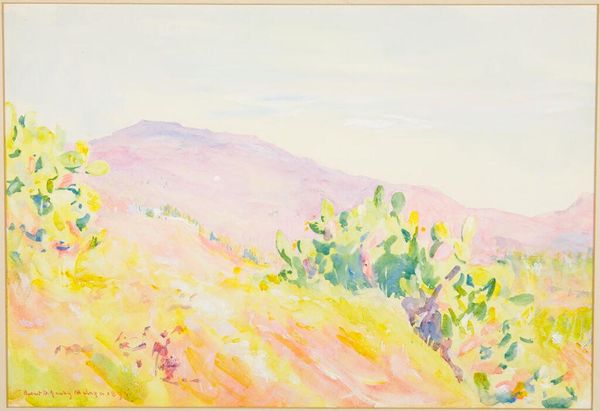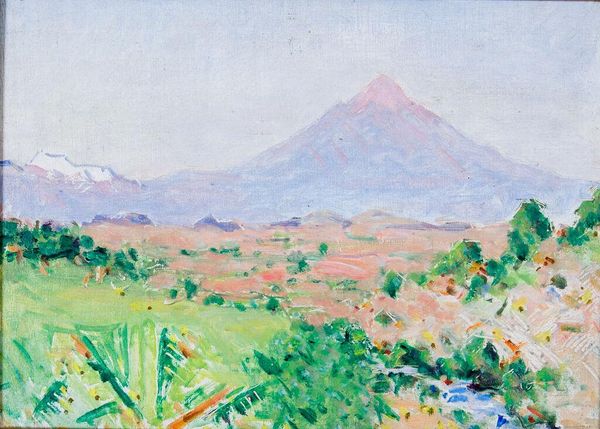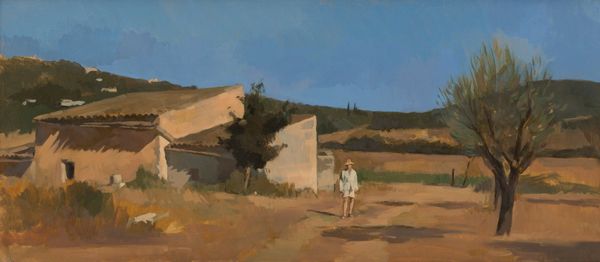
plein-air, oil-paint
#
impressionism
#
plein-air
#
oil-paint
#
landscape
#
oil painting
#
post-impressionism
Copyright: Public domain
Curator: Émile Friant's "Mount Vesuvius," painted in 1887, presents us with a seemingly tranquil scene. Painted en plein air, it attempts to capture the landscape's immediate and transient qualities. Editor: My first impression is one of deceptive serenity. While the brushstrokes and palette suggest a calm, sun-drenched landscape, there's a looming presence of latent power and potential destruction in that distant volcano. Curator: Absolutely. Consider the material realities here: Friant used oil paint, a medium that allowed for blending and layering, to construct the scene. We also should consider how he chose to apply the paint to the canvas outside the studio walls, a way of working linked to Impressionism, and what that represented socially. The landscape itself was made increasingly accessible through emerging rail travel—so what social structures did this work serve? Editor: It’s an intriguing tension. The work seemingly domesticates Vesuvius into something picturesque, and there's a certain normalizing effect happening, making a geological force complicit within structures of tourism, art, and ownership. How did that affect marginalized people nearby living with very real immediate risk? What did the artwork communicate about class? Did people working in factories or fields see the volcano and the risks to life differently from aristocrats or foreign visitors traveling through to see 'natural wonders'? Curator: Those are very pertinent points, and these social dynamics influenced art markets, shaped patronage, and facilitated Friant's choices in representing the landscape. It also underscores that artistic representation and its circulation are themselves products and social constructions. The finished painting had monetary value; the landscape has real human value. Editor: And, while at first it looks merely scenic, placing it within these socio-historical considerations, it encourages questions about environmental justice, and social responsibility – it goes beyond a passive landscape. Thanks for illuminating this with such material awareness. Curator: It’s essential to always connect the visual pleasure of art with the forces—both natural and social—that produce it.
Comments
No comments
Be the first to comment and join the conversation on the ultimate creative platform.
